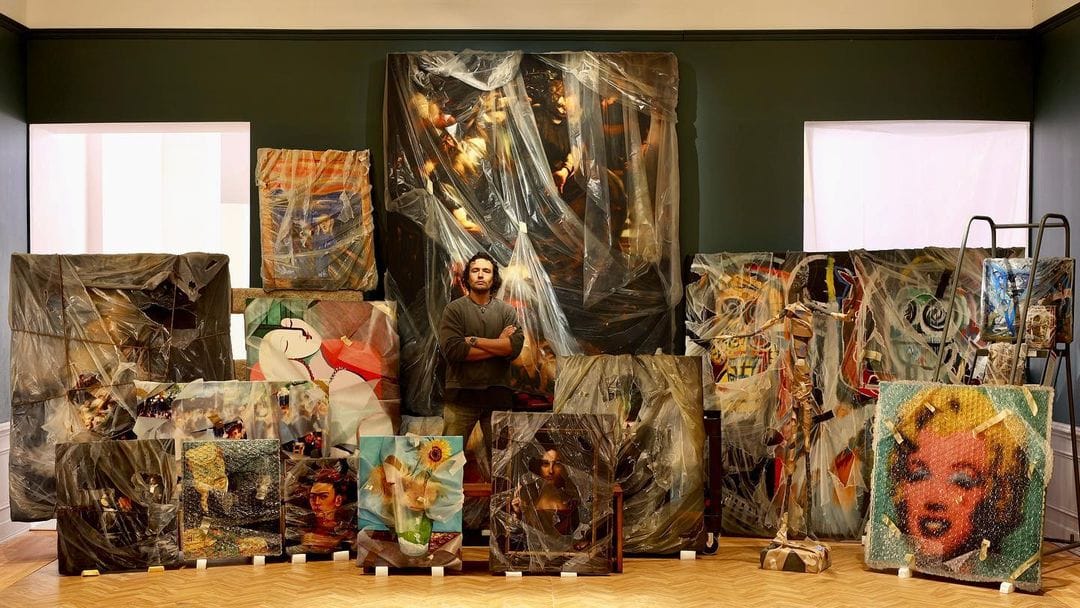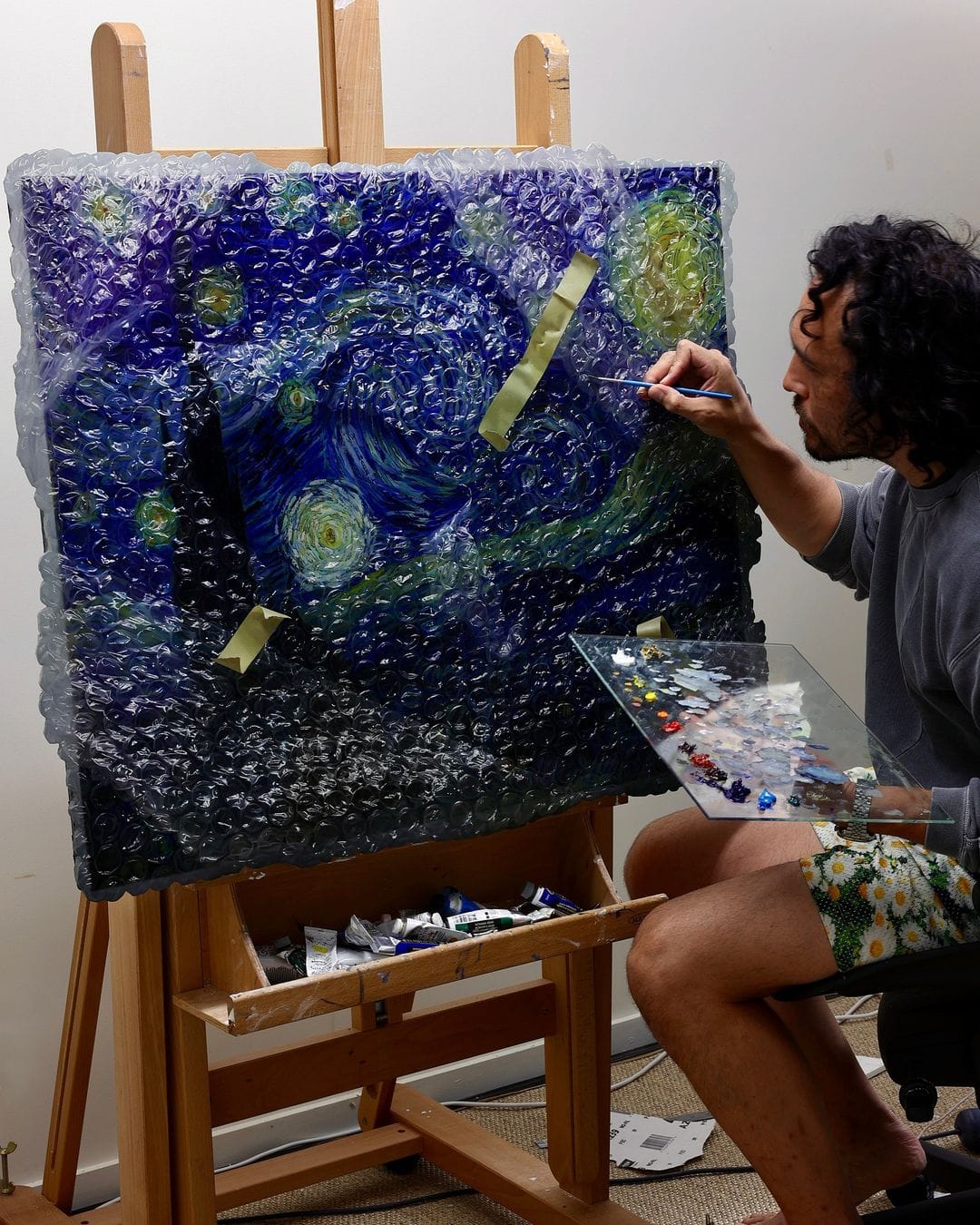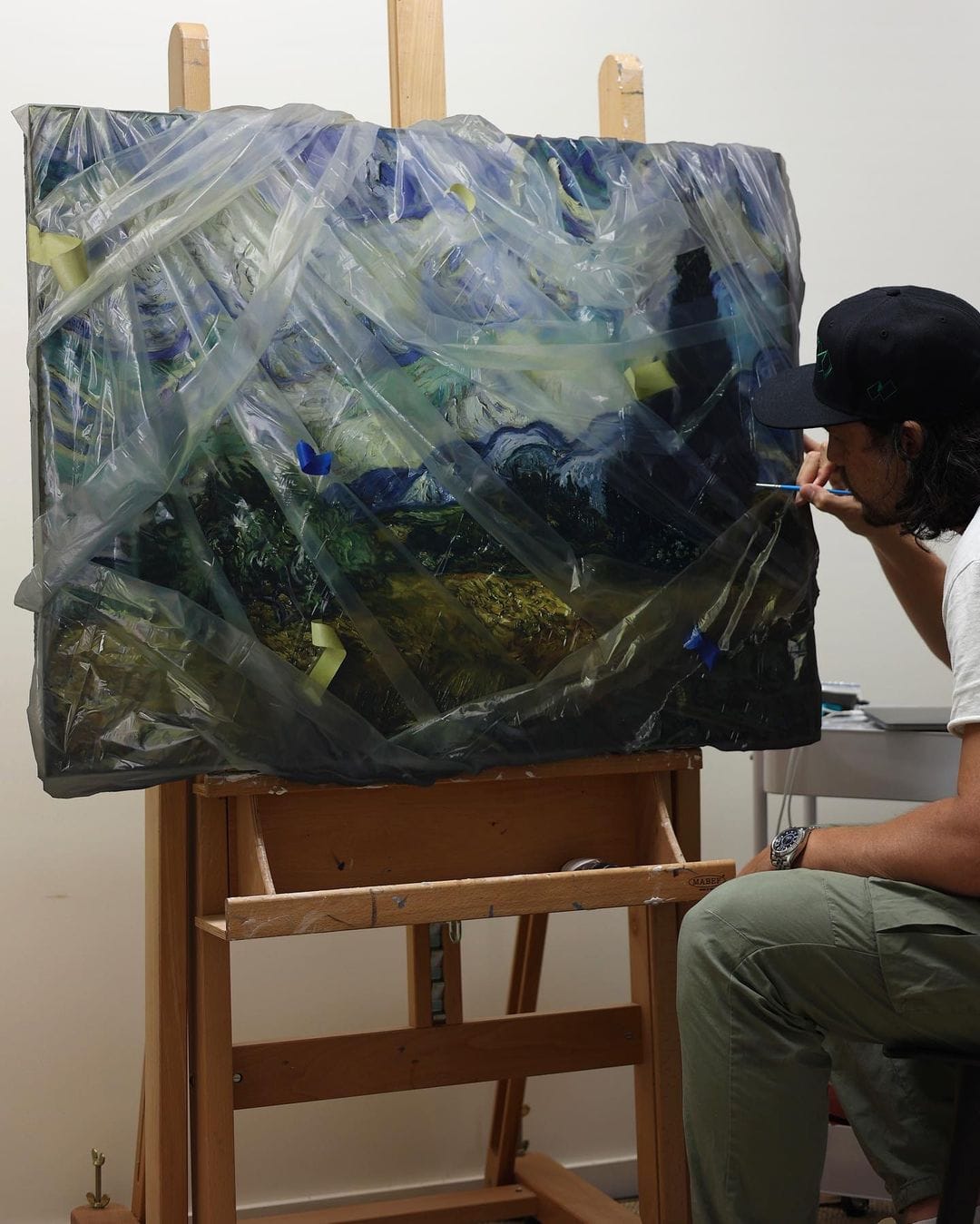Hyper-realistic painter Robin Eley uses his talents to recreate famous paintings from art history, such as Andy Warhol’s Marilyn Monroe and Van Gogh’s The Starry Night. However, to make them his own, he paints them as if they have been packaged in bubble wraps and plastics, ready to be shipped or stored somewhere. The addition of these packaging plastics allude to how in today’s times of overconsumption, the art industry has been increasingly functioning as if it were any other consumer goods industry. Making it a place where artists are driven to create products en masse that are ready for large scale consumption.

Economic pressures build up in today’s recession imminent climate, combined with fast-paced trend-driven consumer behaviour, Eley’s wrapped paintings question if there is still room for art that requires time to create and even more time to contemplate, debate and enjoy. It asks if there is still room for pieces that prove timeless dedications, pieces that show glimpses of the best qualities of humanity, instead of pieces that are mere collectibles, as there are fewer to begin with. This is why Robin Eley's wrapped paintings are aligned with the United Nations Sustainable Development Goal of Responsible Consumption and Production.

Overconsumption in the arts has created environmental problems, with physical waste piling up left and right. This is also another side of art overconsumption that Eley’s work touches upon. In 2019, California-based artist Hellen Mira created the CATHARTES 19 manifesto to outline best practices and principles to help artists respond to overconsumption in the arts. The manifesto includes creating decomposable physical artworks and refraining from non-instrumental travel.

The famous artworks that Eley has portrayed have also become popular tourist destinations, with people flying into different countries to see these works in life. For example, every year 10 million people visit the Mona Lisa at the Louvre in Paris. A staggering 80 percent of them visit the city to see the Mona Lisa. This fuels over-tourism issues such as environmental degradation and low quality of life for locals, while also providing a lower quality experience for the visitors.
Robin Eley's plastic-wrapped paintings are a powerful critique of the art world's entanglement with overconsumption and commodification. By enveloping iconic artworks in bubble wrap and plastic, Eley forces viewers to confront the unsettling reality that art is increasingly treated like any other consumer product—designed for mass production and immediate consumption. His work challenges audiences to reconsider the role of art in society, questioning whether there is still space for pieces that invite deep reflection and timeless appreciation. In highlighting these issues, Eley’s paintings resonate with broader concerns about sustainability and responsible consumption, reminding everyone of the environmental and cultural costs of our relentless pursuit of more. Through this, Eley critiques the art industry and offers a broader commentary on the unsustainable patterns of modern consumerism.
Find out more about plastic wrapped paintings and other pieces by Robin Eley on his website www.robineley.com or Instagram @robineleyartist.
